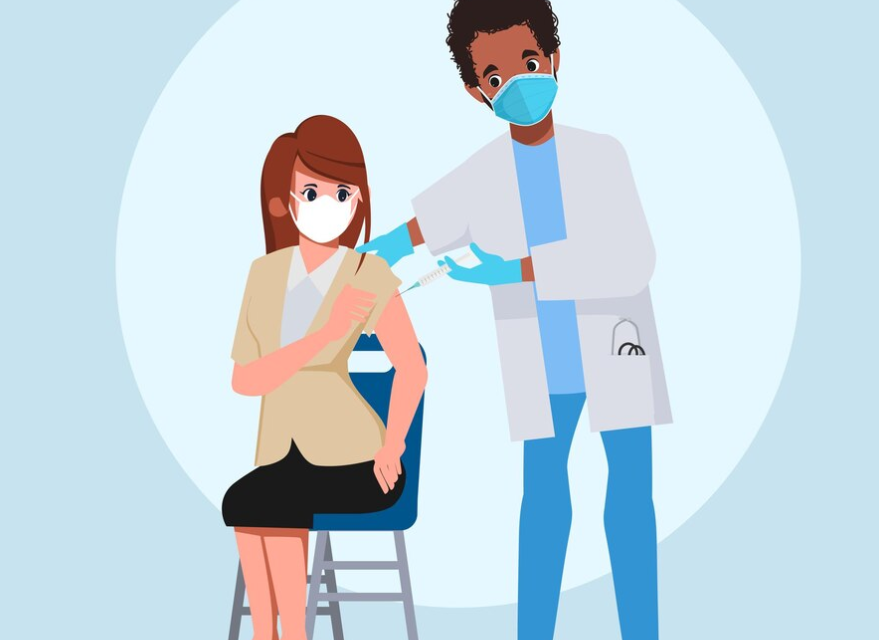Prefer to listen? Check out my podcast here!
One in three Canadian adults will get shingles at some point in their life. Shingles can be extremely painful, can occur in devastating locations, and can cause debilitating pain that can last months afterwards (called postherpetic neuralgia).
Shingles is caused by a reactivation of the chicken pox virus. After we get the chicken pox virus (called the varicella zoster virus), the virus lays dormant in the nerves just outside of our spinal cord. Then, often in times of physical or psychological stress, or after starting medications that suppress the immune system, the virus reactivates as shingles (aka herpes zoster). Whether or not you remember having chicken pox as a kid, data has demonstrated that over 99% of adults age 40+ carry the virus in the US (likely very similar in Canada). The older we get, the higher the risk of shingles, due to the aging of our immune system. People with preexisting health conditions like cardiovascular disease, diabetes, and chronic kidney disease are at higher risk of having shingles and/or postherpetic pain associated with shingles.
Shingles usually starts with typical viral-type symptoms including headache, fever, and muscle pain. The vesicular rash then erupts, usually one-sided, with associated pain. Postherpetic neuralgia is the most common complication of shingles, with 5-30% of people having pain that last 3 months or more. The rash can lead to complications at the site of eruption, including scarring, eye involvement/complications, and even hearing loss.
What is very underrecognized is that having a shingles episode is associated with an increased risk of cardiovascular events. This is thought to be due to the inflammatory state that arises or is exacerbated in association with shingles, causing inflammation in the walls of the arteries, and creating an environment that is prothrombotic (making the blood more prone to clotting). A systematic review and meta-analysis of 12 studies examining 7.9 million patients found a 31% higher risk of having a heart attack within 3 months after having shingles, and a 40% increased risk of stroke in the first year after having shingles.
The good news is that there is a vaccine that markedly reduces the risk of shingles, called Shingrix. It is indicated for people age 50+ , or people age 18+ who are or will be at increased risk of shingles due to immunodeficiency or immunosuppression caused by a disease or by therapy. Shingrix is administered as two vaccinations given 2-6 months apart. Vaccine efficacy is over 87% at 4 years post vaccination, with similar efficacy 10 years after vaccination. Efficacy is similar across age groups 50+ and in people with health comorbidities like diabetes, heart disease, or chronic kidney disease. The vaccine also reduces the risk of postherpetic nerve pain.
Potential side effects are typical of other vaccines, with most common symptoms including pain at the injection site, muscle pain, fatigue, and headache. These can last generally 1-3 days and are mostly mild. There were 6 cases per million vaccine doses of Gullian-Barre syndrome (a severe neurologic side effect that can rarely be seen with vaccines). Health Canada deemed this insufficient to determine a causal relationship with Shingrix.
One in three shingles cases occurs in people under age 50, so I would really like to see the shingles vaccine studied in immunocompetent people younger than 50.
BOTTOM LINE: Shingles is common, can cause debilitating pain, and is associated with an increased risk of heart attack and stroke. The shingles vaccine is an easy, two-step intervention that powerfully reduces the risk of having shingles. For people age 50+, or people age 18+ who are immunocompromised, I encourage you to proactively discuss the shingles vaccine with your health care provider. For health care providers, I encourage you to proactively discuss this vaccine with your patients!
Disclaimer: I receive honoraria as a continuing medical education speaker and consultant from the makers of Shingrix (Glaxo Smith Kline).
Share this blog post using your favorite social media link below!
Check me out on X / Twitter! @drsuepedersen
www.drsue.ca © 2024












